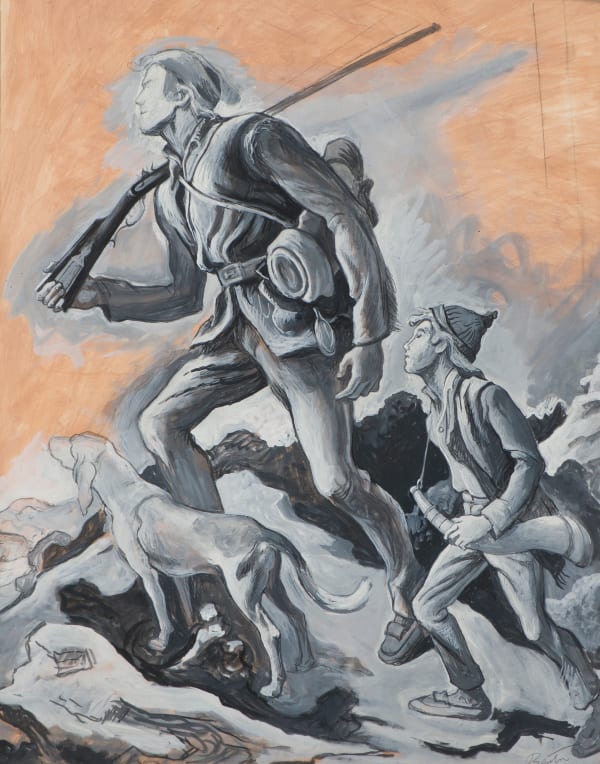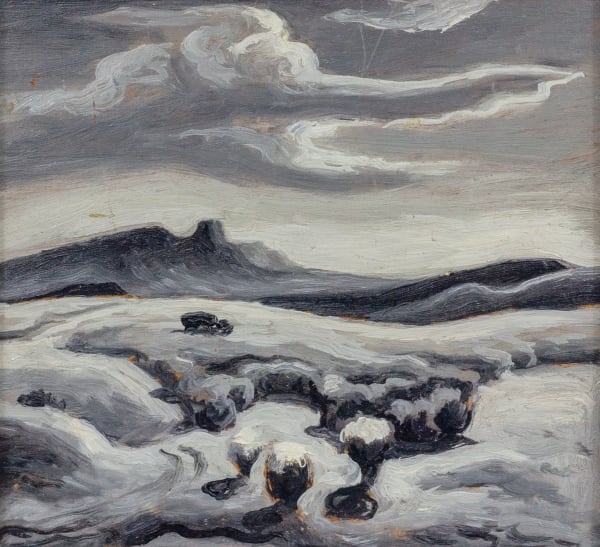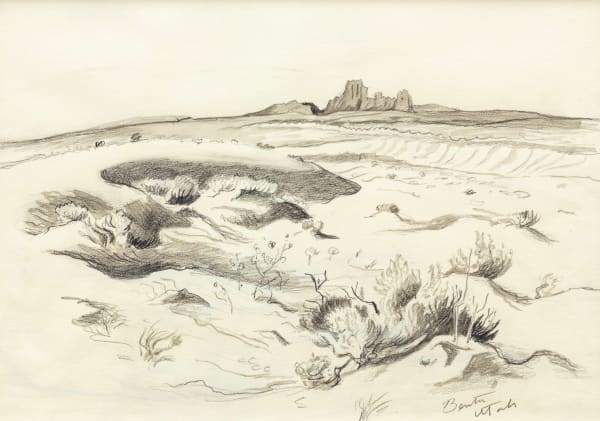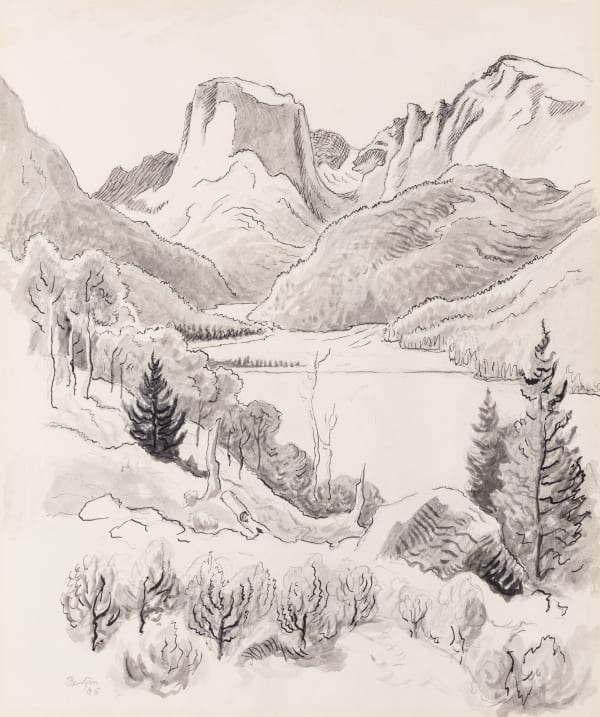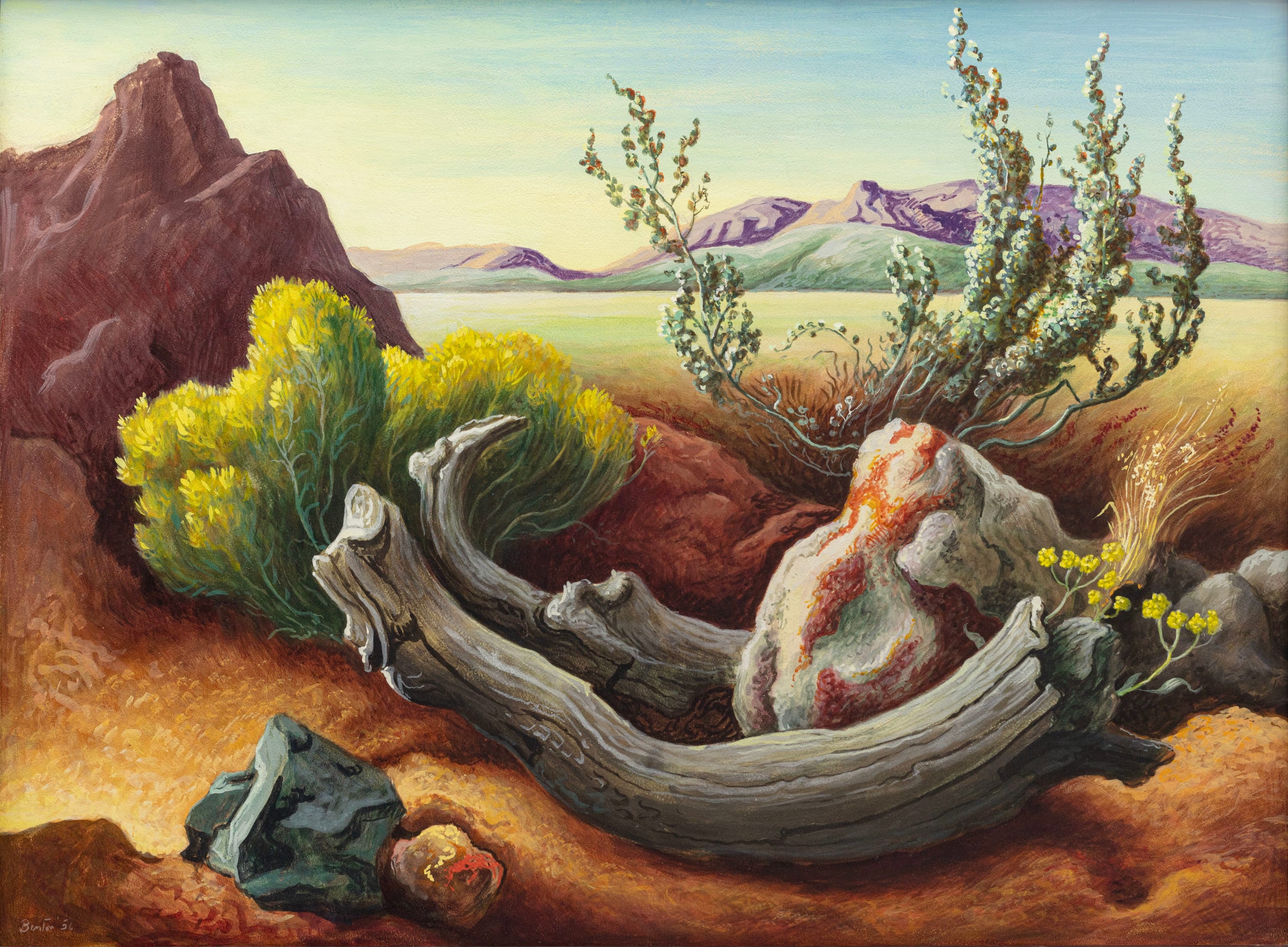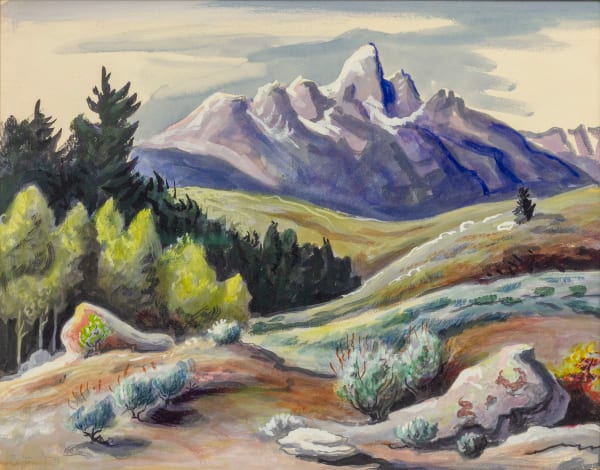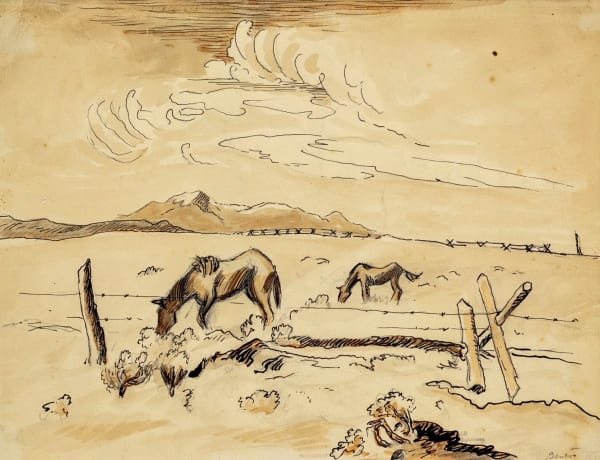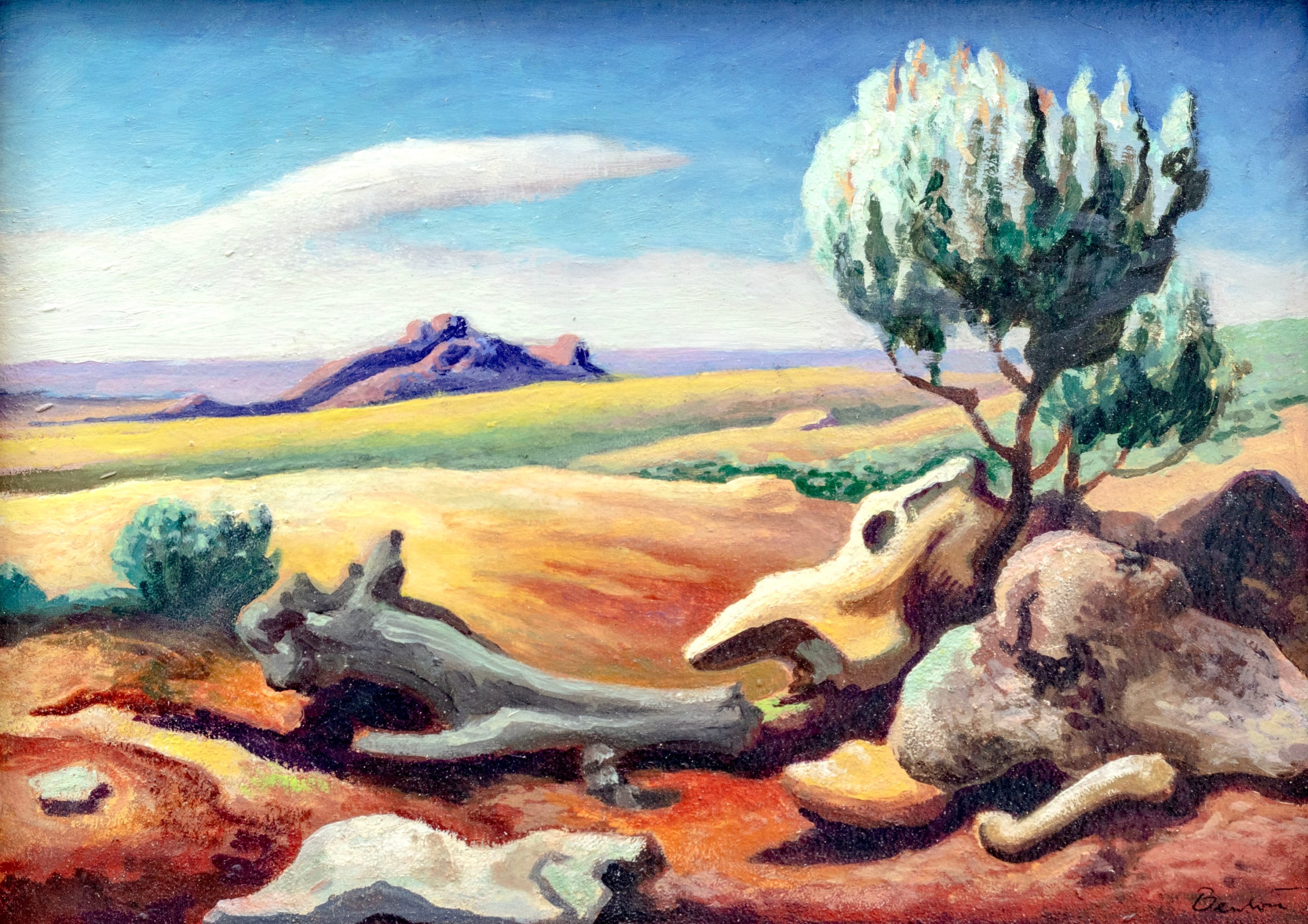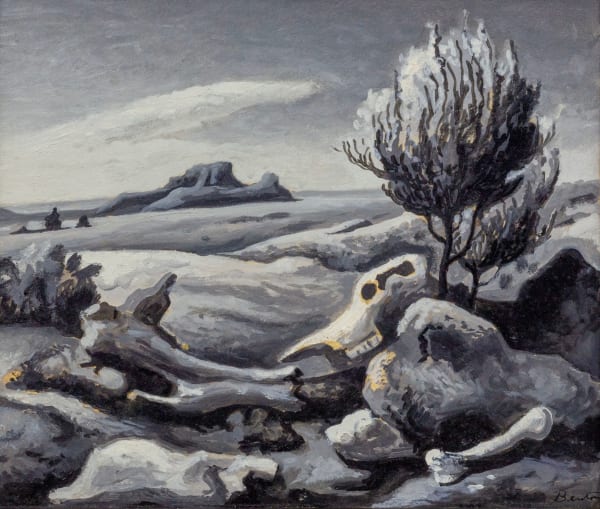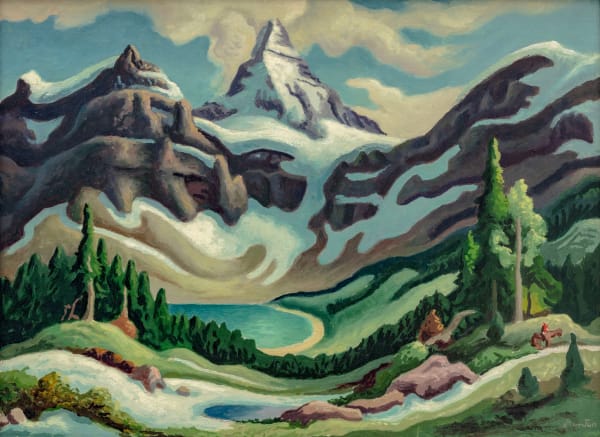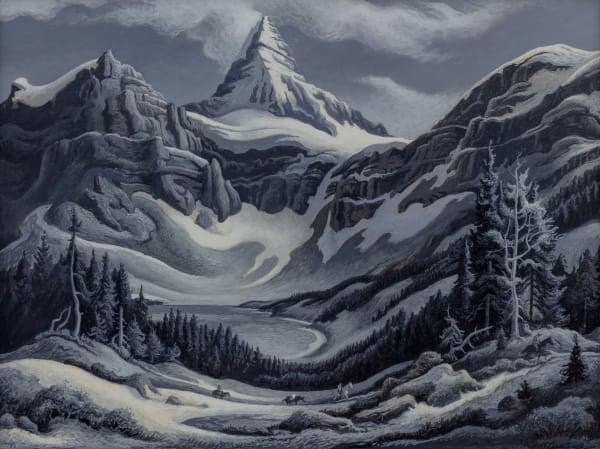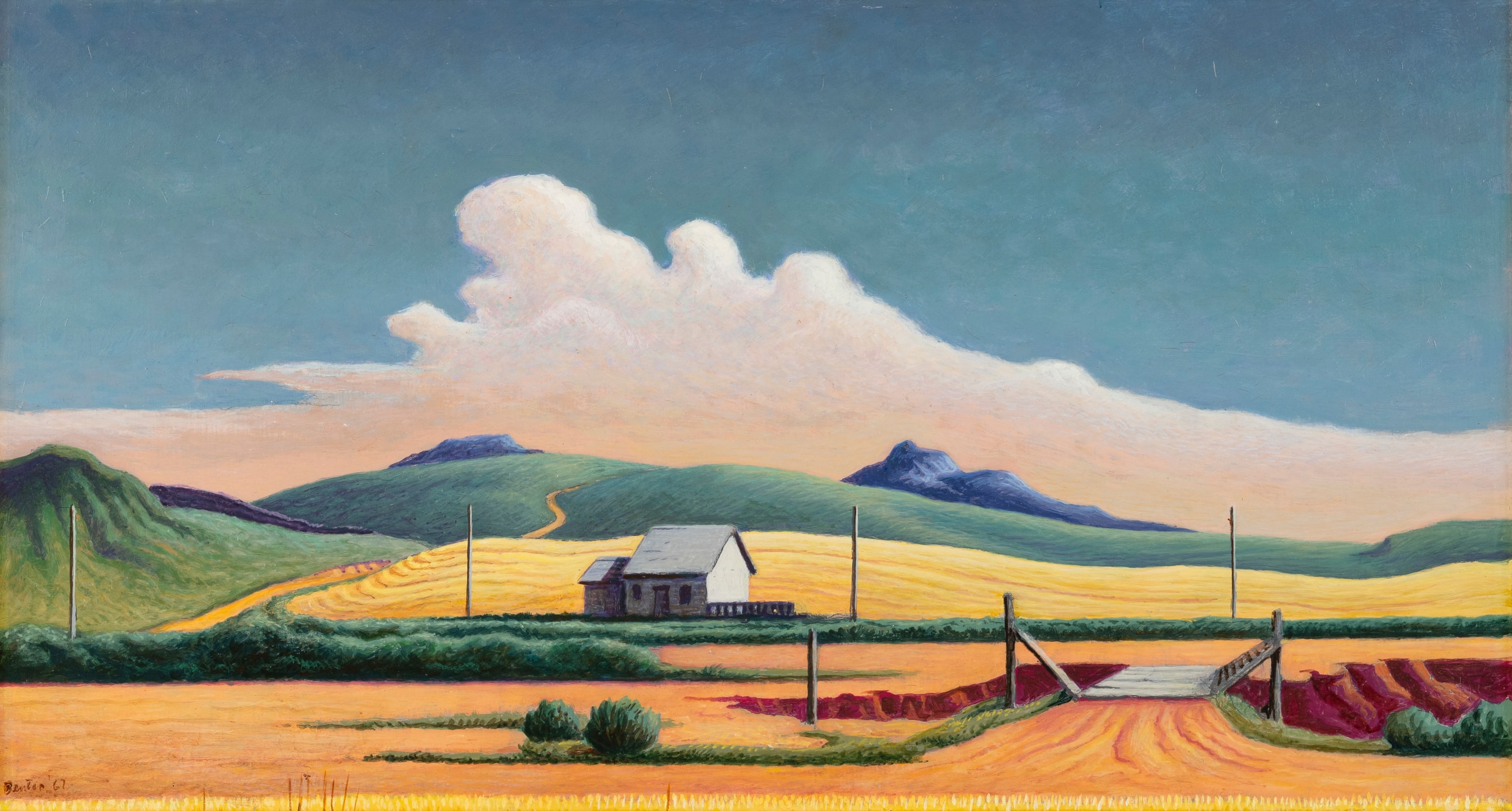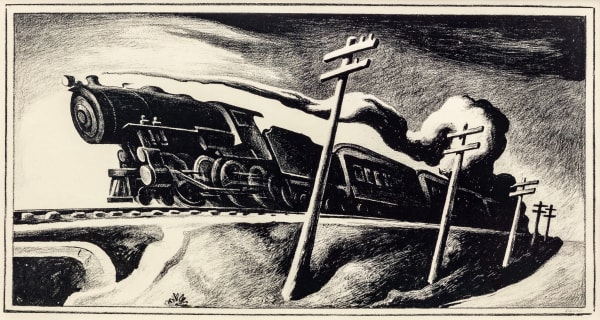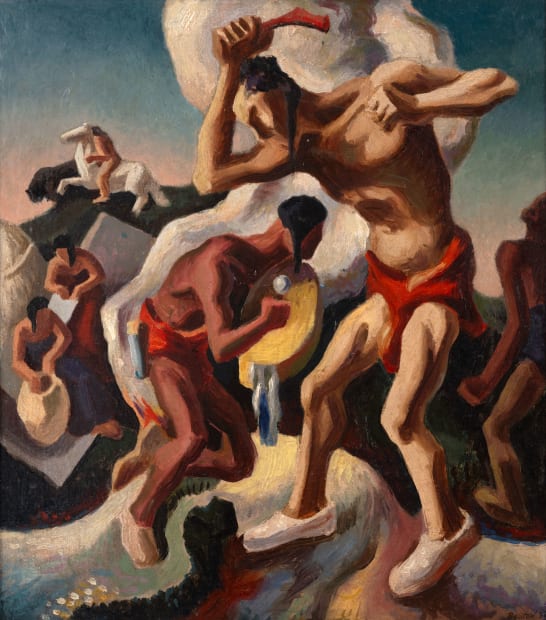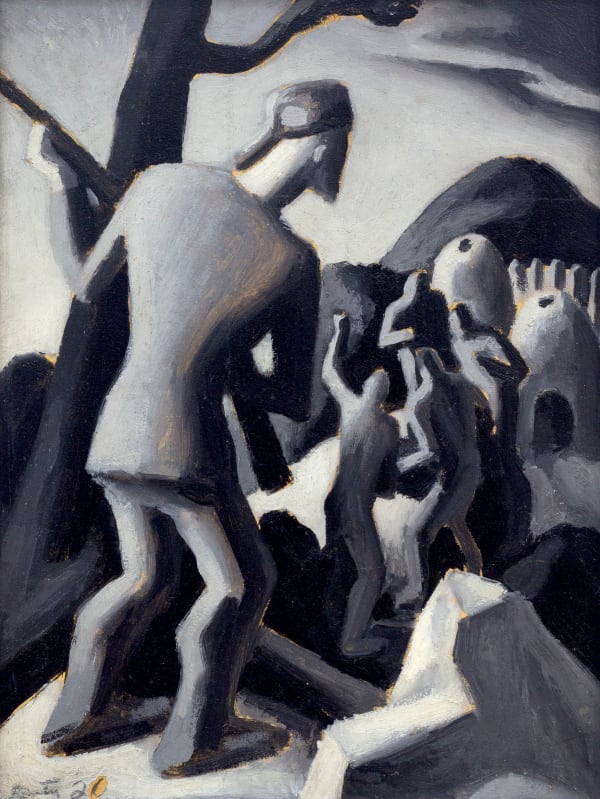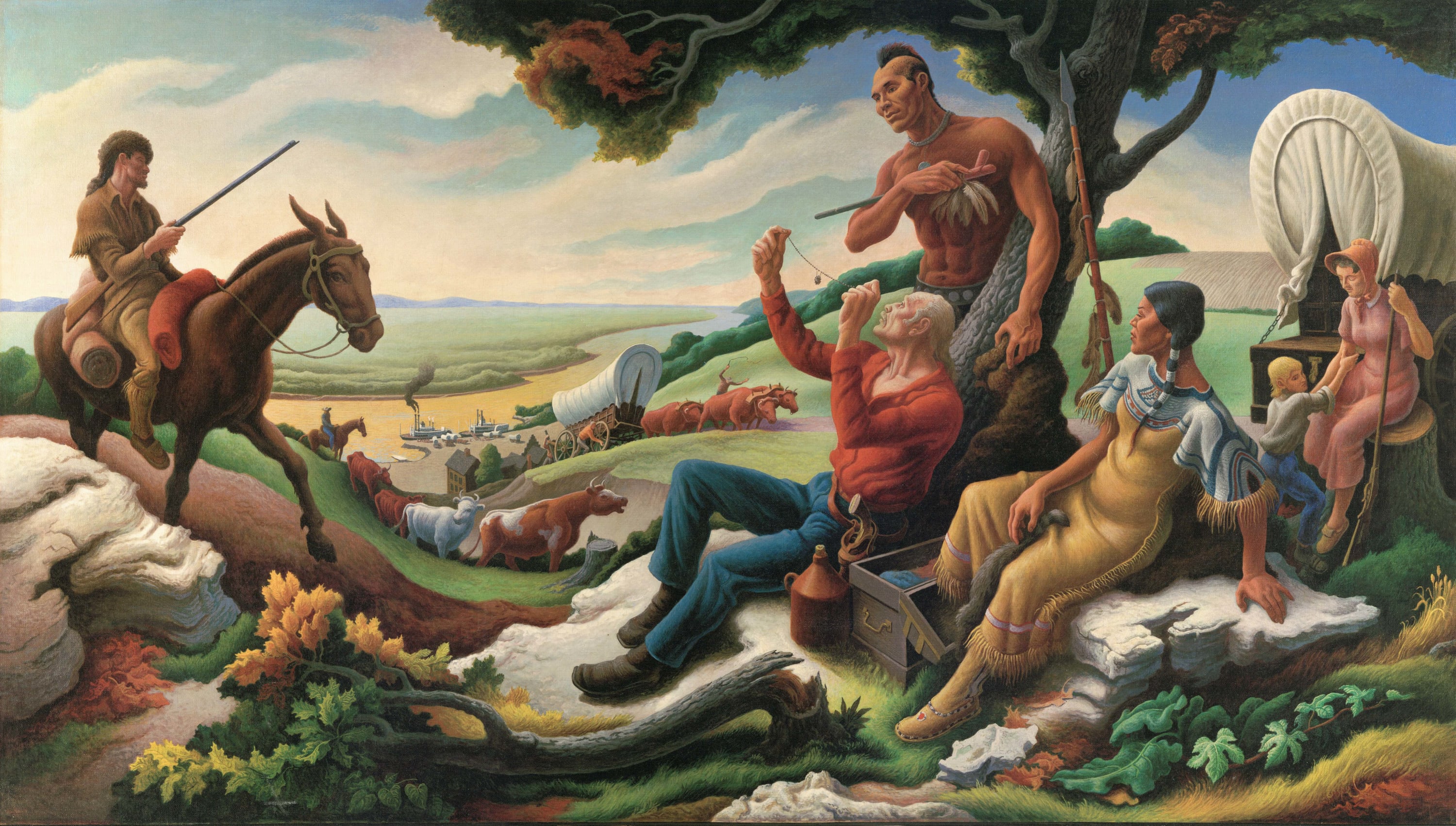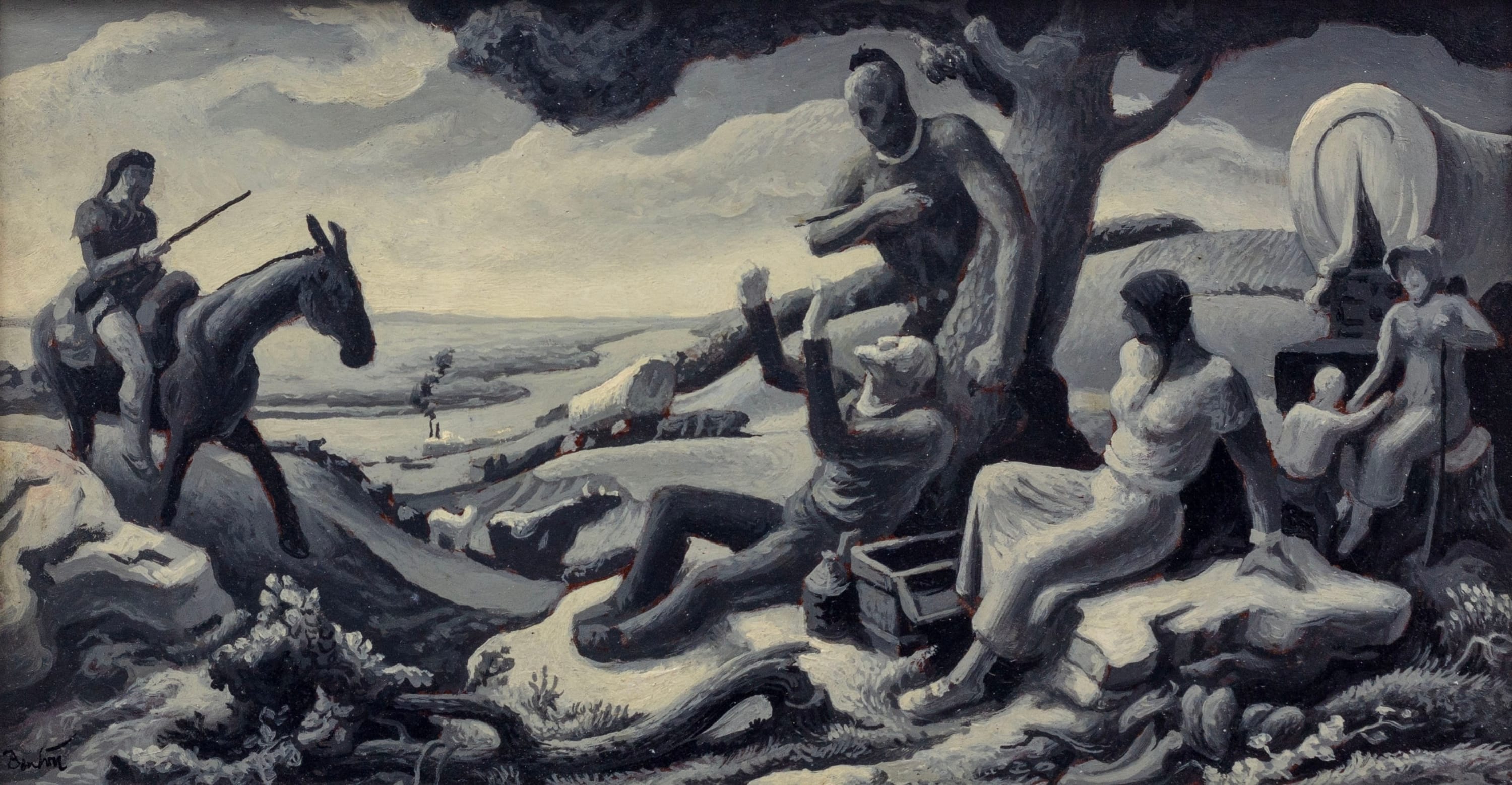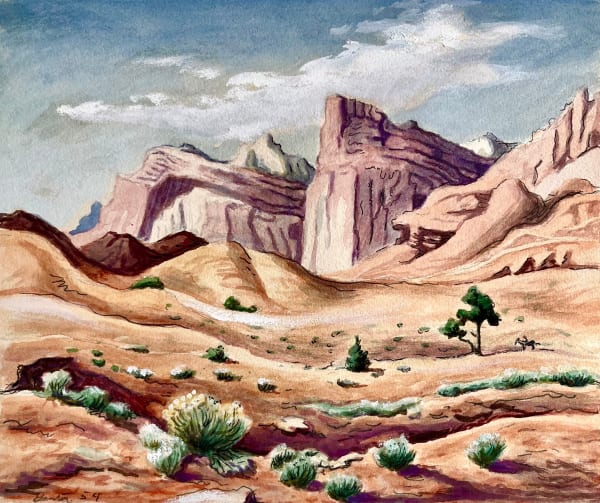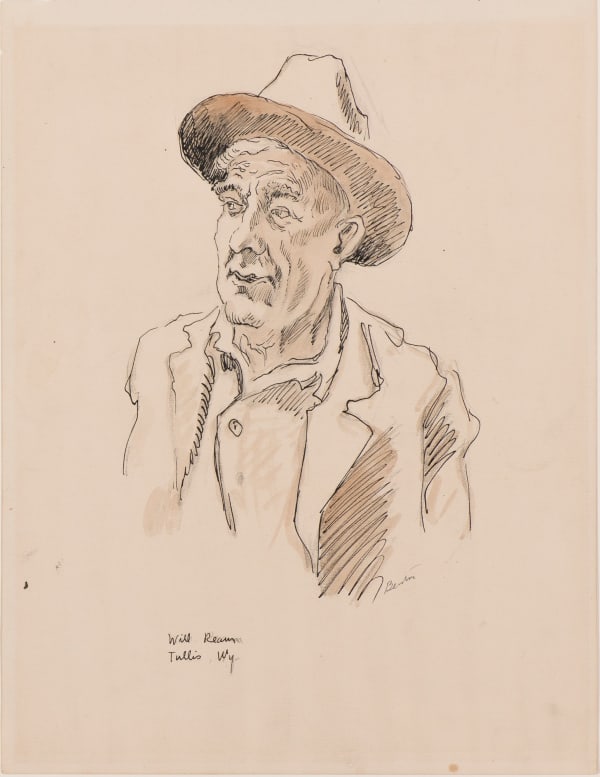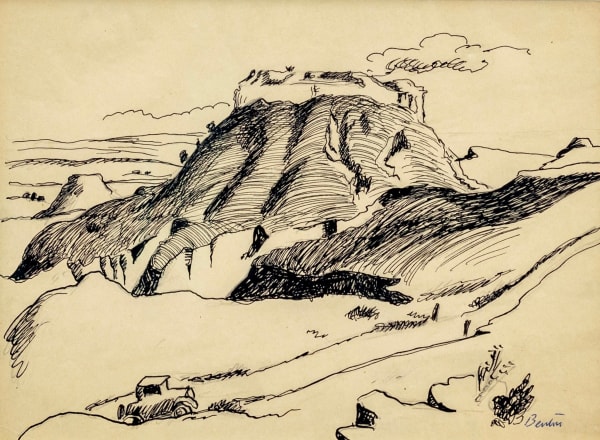Thomas Hart Benton opened the penultimate chapter of his 1937 autobiography by asking: “Where Does the West Begin?” The painter, who would travel in the region for nearly five decades, answered by tracing the “marked change of country” to “a zigzag pattern up and down the ninety-eight degree line.”
-

Thomas Hart Benton
Study for "The Kentuckian", 1954Thomas Hart Benton's The Kentuckian stands at the intersection of art, cinema, and popular culture in mid-century America. Commissioned in 1953 by Norma Productions, a leading film production company, the painting was intended to promote their film, which starred well-known actor and producer Burt Lancaster. Admirers of Benton's work, Lancaster and his team extended an invitation to the artist to observe the film's production and read the script for inspiration. Set in 1820s Kentucky, the film chronicles the story of Elias "Big Eli" Wakefield, a frontiersman, and his son, "Little Eli," as they venture to Texas to start a new life, encountering a host of challenges along the way. Exploring themes of family, survival, and the pioneering ethos of the American frontier, Benton captures this archetypal frontiersman, clad in buckskins, leading his family westward toward a frontier village. Against the backdrop of a vibrant natural landscape, the figure of the Kentuckian dominates the composition, his confident stride accentuated by the dynamic diagonal positioning of the figures. -

-

Thomas Hart Benton
The Desert, 1956Thomas Hart Benton's The Desert, painted in 1956, exemplifies his ability to capture the atmosphere of the American West. Benton's use of highly saturated colors in The Desert evokes the intensity of the desert sun, while his undulating forms create a dynamic, visually engaging composition. Rather than directly conveying the majesty of the West through sweeping mountain views, as traditionally seen in the nineteenth-century American tradition from artists such as Thomas Cole, Frederic Church, and Albert Bierstadt, Benton's subtle approach blends two of his favored genres, still life, and landscape, to create a characteristically Western scene. While the background showcases the vast, open expanses typical of portrayals of the West, in the foreground, Benton presents a still-life arrangement of weathered logs, lichen-covered rocks, and an assortment of desert flora, including sagebrush, desert marigolds, and grasses. These elements are rendered in vibrant colors, contrasting against the red rock terrain. -

Thomas Hart Benton
Desert Still Life, c. 1951Desert Still Life merges two of Benton's favored genres: still life and landscape. The vast, open landscape of the American West forms the backdrop, while the foreground features a dramatic still life consisting of a weathered log, sun-bleached cattle bones, and dusty rocks. The cow skull and bones evoke Georgia O'Keeffe's use of skulls in her works. In both artists' work, the skulls serve as Vanitas symbols of nature's cycle of life and death, encapsulating their connections to the natural world and their engagement with the environment of the American Southwest. -

Thomas Hart Benton
The Plains, 1953Although the scene in The Plains, and other of Benton’s Western paintings look initially pastoral, the painter articulated unsettling experiences in the vast spaces. Many found it “unbearable,” especially those he termed “cozy-minded people” who need “the sense of intimacy.” Some experienced “the monotony, the weariness, the oppressiveness” of the plains landscape. Benton felt a “releasing effect” and “immense freedom of spirit” that allowed him to escape even beyond his own busy mind.[1]
—Lauren Kroiz, excerpt from Thomas Hart Benton: Where Does the West Begin?, Schoelkopf Gallery, 2024
Thomas Hart Benton, An Artist in America, New York: R. M. McBride & Co., 1937, p. 199-200.
-
Trail Riders features a wide-angle view of a valley leading up to the towering, snow-covered Mount Assiniboine. Flanked by dark ridges, the mountain’s peak nearly touches the edge of the composition. In the foreground, three tiny horses and two riders, representing the artist himself and his traveling companion traverse the valley. The third horse, the “remount” was likely kept on hand to allow the riders to switch horses when one became tired or needed rest. The scale of the horses and riders emphasize the vastness of the majestic landscape. Known as the “Matterhorn of North America” due to its triangular shape, Mount Assiniboine is situated on the Continental Divide, straddling the border between British Columbia and Alberta, Canada. Benton’s portrayal includes Lake Magog at the center.
-

Thomas Hart Benton
Wyoming Landscape, 1967SOLD -

-

Thomas Hart Benton
Trading at Westport Landing (Old Kansas City), 1956The gallery is honored to present Benton's masterpiece, Trading at Westport Landing (Old Kansas City), 1956, generously loaned by The River Club of Kansas City, Missouri
Thomas Hart Benton painted overtly historic murals in the 1950s, including a 1955 commission from the River Club, which he described as "an exclusive businessmen's organization in Kansas City." The group requested an overmantle mural for the lounge "depicting Old Kansas City-pioneer Kansas City." [1] The assignment suggests Benton's increasing integration into Kansas City and willingness to depict a more harmonious vision of Western settlement. The white settler family engages in trade with a Native American man and woman, rendered with some ethnographic specificity likely to evoke the Pawnee Tribe. The Native American man holds a pipe rather than a weapon, although the white man has a revolver on his hip, as stagecoaches and cattle stream upward from the Missouri River and boats below. Benton idealized and abstracted, but he did capture the sharp bend in the river that characterized the elevated view from the Northwest edge of downtown Kansas City, where the prestigious club is located, suggesting environmental continuity contributed to the resonance of imagined history.
[1] There are four editions of Benton's 1937 autobiography. He authored new chapter updates appended at the end "After" (1951 edition) and "And Still After" (1968 edition), both are included in the posthumous edition that I cite: Thomas Hart Benton, "And Still After," An Artist in America, (Columbia: University of Missouri Press, 1989), p. 330
-Excerpt from Lauren Kroiz,Thomas Hart Benton: Where Does the West Begin?, Schoelkopf Gallery, 2024 -

Thomas Hart Benton
Study for "Trading at Westport Landing (Old Kansas City)", c. 1956Oil on board
6⅜ x 11⅞ inches
16.2 x 30.2 cm -
For additional information about Thomas Hart Benton: Where Does the West Begin? or any of the works presented, please be in touch with Alana Ricca at alana@schoelkopfgallery.com or (212) 879 - 8815



